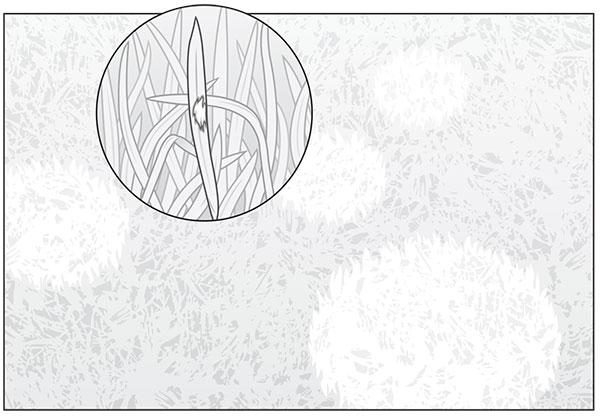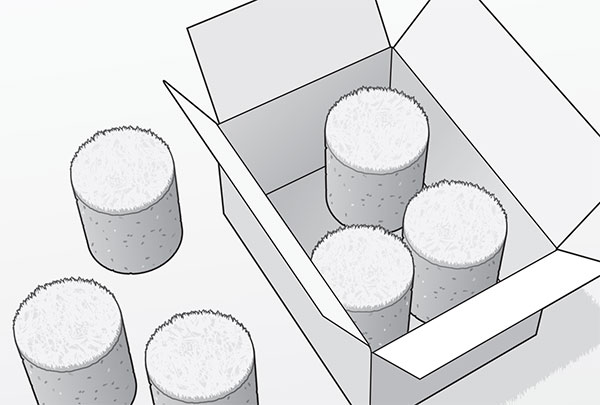When the ‘disease triangle’ is present in a lawn, problems can crop up.
Turf disease isn’t only an unsightly nuisance for homeowners. It can also be extremely damaging for lawns if not treated properly.
For a disease to cause a problem, three components—referred to as the disease triangle—must first exist: a host, a pathogen and a conducive environment. The host (turfgrass) has to be susceptible to the disease, the disease pathogen needs to be present and the environmental conditions (temperature, moisture and soil fertility/pH) have to be favorable for the disease.
If any of the components are missing, the disease isn’t going to cause problems. But when a lawn has the trifecta, issues will appear. To properly treat the disease, lawn care professionals will need to first identify it—and that starts with identifying the affected turfgrass.
Once the type of turf is known, landscape professionals need to determine the month the damage is occurring. This helps narrow down possible diseases. For example, in some areas, gray snow mold is found from November to February, dollar spot is found April to October and brown patch is found from the end of June to August.
Turf pros also should look for physical signs of turf disease damage, including field patterns, symptoms and signs. Field patterns can be circular, linear, frogeye or diffused areas (meaning it doesn’t have a well-defined pattern). These patterns are visible from a distance, whereas spotting disease symptoms requires a closer look. Symptoms include root rot, dieback, blight and leaf spots, which is normally the most recognized symptom.
The signs are part of the pathogen that is causing the disease, including mycelium, sclerotia, setae and spore masses. A full description of each can be found at extension.purdue.edu, but the most familiar one is mycelium, which has a mass of white or gray fungal threads.
The goal is to narrow down the possible list of turf diseases until one is found that meets the description. When in doubt, lawn care professionals can send a turfgrass sample to their local extension offices for identification. Check with your extension office to see how they require the sample to be prepared and shipped.
Step 1
Identify the type of turfgrass affected and consider the time of year. Each type of turf has its own set of possible diseases, and the month will help narrow down that list further.
Step 2
Look for turf disease damage, including field patterns, symptoms and signs
Step 3
Send a sample of the affected turf to the local extension office if you’re unable to identify it using other methods.
Sources: Purdue Extension; Eric Brown, Ph.D., director of agronomy, Massey Services
illustrations: David Preiss





